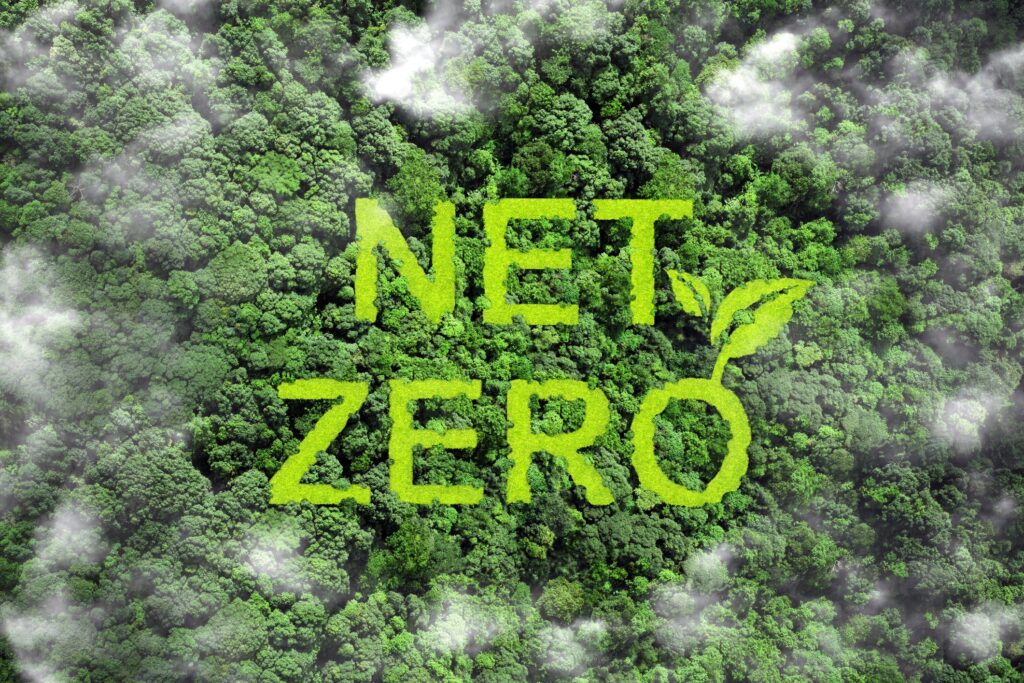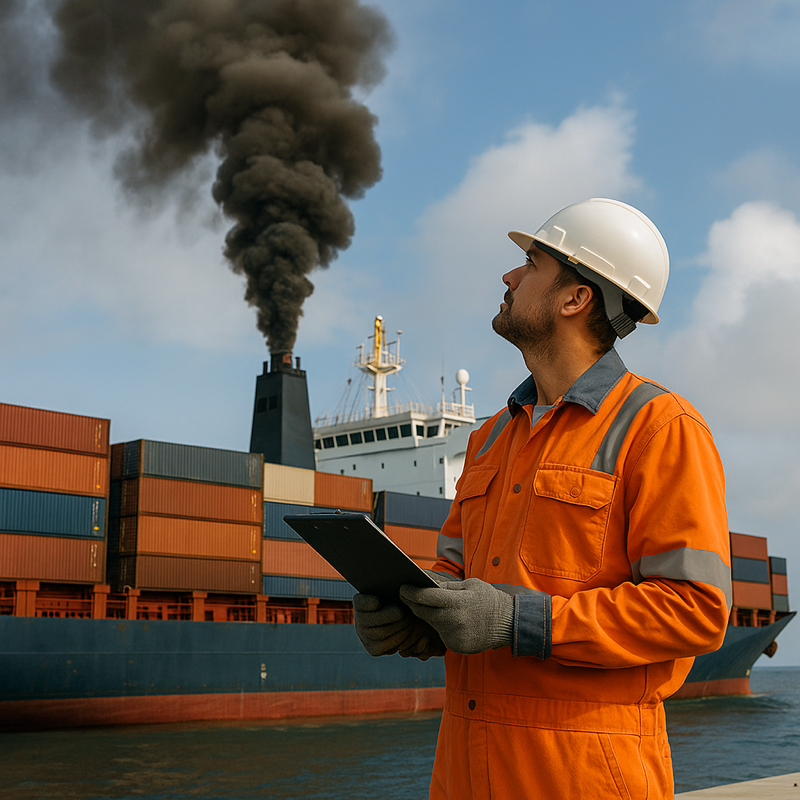A recent report by the Rhodium Group stated that greenhouse gas emissions in the United States increased by 1.3% in 2022. Transportation and industry, two sectors traditionally challenging to decarbonize, experienced emissions increases of just over 1% each, contributing to the overall rise in U.S. emissions in 2022.
To achieve its goal of reducing emissions by 50% in 2030, the United States would have to reduce emissions by 5% each year for the next ten years. Between 2011 and 2020, U.S. emissions decreased at an average rate of 1.7% per year, according to data from the Environmental Protection Agency (EPA). However, this rate overestimates the country’s actual progress because it includes a 10% decrease in emissions in 2020, primarily due to the COVID-19 pandemic.
As global citizens, we are responsible for protecting our planet and the environment. Carbon offsetting in the supply chain and shipping is an essential measure companies can take to reduce their environmental impact. By investing in carbon offsetting initiatives, businesses can significantly contribute to reducing their carbon footprint while helping create a more sustainable future.
This article discusses carbon offsetting and insetting, how this works specifically in supply chain and shipping, the benefits and challenges, and the role of technology platforms in carbon offsetting for shipping.
What are Carbon Offsets, and How Do They Work?
Carbon offsetting is a strategy companies use to compensate for the greenhouse gas emissions they produce, thus reducing their net GHG emissions. Carbon offsets represent a measurable, verified reduction in GHG emissions achieved through a certified project. Carbon credits are the units used to measure the emission reductions that a company can purchase, as these carbon offsetting projects remove GHG emissions from the atmosphere.
A company can choose to financially support such projects when it cannot immediately reduce its GHG emissions directly, essentially reducing emissions outside of its organization and operations rather than reducing them inside the organization. The company purchasing carbon credits can then report this offset of GHG emissions. For example, if a company produces 500 tonnes of GHG emissions annually, it can purchase 500 carbon credits from a certified project that has reduced or sequestered 500 tonnes of GHG emissions. (If it were a reforestation project, 1 tonne of CO2 would require roughly 31 to 46 trees to offset.) By buying carbon credits, the company has offset its emissions, and the carbon credit transaction has helped to finance the project.
These projects must comply with rigorous standards set by third-party organizations, examined by a team of experts from established carbon offset standards such as Verra’s Verified Carbon Standard (VCS) or the Gold Standard (GS). In addition, when an organization purchases a carbon credit, it is retired to ensure it cannot be bought twice so that carbon offsetting programs represent a real, verifiable change to the environment.
Carbon Offset Projects
Many examples of carbon offset projects fall into four categories—forestry and conservation, renewable energy projects, community projects, and projects converting waste to energy. Forestry projects involve conservation efforts that generate carbon credits by planting trees, which capture carbon. Renewable energy offsets include investing in renewable energy sources like solar, wind, or hydropower and decreasing reliance on fossil fuels. Community projects help bring energy-efficient technology to underserved communities. Finally, waste-to-energy projects capture emissions from sites like landfills and convert them into clean energy.
Carbon capture and storage (CCS) is another type of offsetting carbon option, similar to waste-to-energy projects. This involves the capture of carbon dioxide emissions from industrial processes or power plants and storing them underground, typically in depleted oil and gas reservoirs. While carbon capture can be expensive and technically challenging, it offers another option companies can invest in to reduce greenhouse gasses in the environment.
The price of carbon credits varies greatly depending on the supply and demand of credits—there is an entire market for those that invest in these credits to sell and the companies they sell to. Credits can be estimated to be between $40 and $80 per metric ton for 2023, an increase compared to the average of $12.70 for 2021 due to increased demand plus a limited supply of credits.
For many companies, carbon offsets are part of a broader strategy to reduce GHG emissions and achieve net-zero emissions targets. While they are not a substitute for reducing internal GHG emissions or emissions from the value chain, they can be a useful tool to help companies move toward a more sustainable and low-carbon future.
Carbon Offsetting & Insetting: What’s the Difference?
The existence of carbon offsetting programs shows the difficulty of reducing operations-related carbon emissions. The fact is that many emissions are unavoidable for a company to function, and their immediate internal reduction efforts may need to be more to reach climate goals. Carbon offsetting allows organizations to take responsibility for their unavoidable emissions by funding projects that reduce or remove an equivalent amount of carbon from the atmosphere.
However, relying solely on carbon offsetting without reducing emissions at the source is not a sustainable solution for climate change. It is essential for companies to also focus on reducing emissions through the increased energy efficiency of operations, utilizing renewable energy sources, reducing waste, and other measures.
Carbon insetting is reducing carbon emissions within a company’s value chain or operations rather than through an external carbon offset project. For example, a company may invest in renewable energy to power its facilities, adopt process efficiency improvements for manufacturing, work with more sustainable suppliers, or use more fuel-efficient transportation and logistics practices. Insetting projects can be upstream within the value chain, targeting activities performed by the company’s suppliers, or downstream within the value chain, focusing on activities that occur after the product’s manufacturing, such as transportation, packaging, and warehousing.
By investing in insetting projects, companies can reduce their carbon footprint, promote sustainable practices, and reduce their reliance on external carbon offsets. This is one of the primary benefits of insetting, along with greater transparency, due to the efforts being closely related to the company’s operations.
Carbon insetting is seen as a complementary approach to carbon offsetting in reducing carbon emissions. The critical difference is whether the efforts directly relate to or outside the value chain. Many companies are exploring ways to implement both strategies to achieve their carbon reduction goals.
The best approach is striking an appropriate balance between offsetting and insetting. Where insetting is not feasible or practical, this is where offsetting comes into play. Utilizing only offsetting may be the easiest way to reduce net emissions. However, a lot of potential is left on the table by neglecting insetting. Global carbon emissions would only be where they could or should be with organizations addressing their value chains. On the other hand, offsetting is necessary for achieving net zero emissions, or carbon neutrality, even if the organization has already cut emissions at every possible opportunity through insetting. A balanced approach is most effective when considering the short and long-term potential for carbon emissions reduction.
How Do Carbon Offsets Work in Supply Chain & Shipping?
It is essential to understand the three types of carbon emissions and carbon offsets within the supply chain and shipping. Scope 1, 2, and 3 emissions are categories that classify greenhouse gasses related to an organization’s activities.
Scope 1 emissions are the most straightforward, as the direct emissions are from sources owned or controlled by the organization.
Scope 2 emissions are the indirect emissions from purchased electricity, steam, heating, or cooling consumption.
Scope 3 emissions are all other indirect emissions within the organization’s value chain, including emissions from suppliers, transportation, and the use and disposal of products. These are often the largest source of emissions for many organizations.
Companies must consider insetting within their Scope 3 emissions to reduce their shipping-related carbon emissions, assuming they do not own the vehicles used to deliver their shipments. The same emissions are classified as Scope 1 for the transportation providers or shipping companies because their business is directly supplying the transportation service.
Some shipping companies have set up a carbon offset program themselves, which they offer to their customers. Customers can choose this service and pay more for their shipping to get the assurance that these services are carbon-neutral, which they can then report in the category of Scope 3 emissions. Other companies offer specific items, like shipping envelopes, that are verified to be carbon-neutral. Another option is for the shipping company to appeal to environmentally-conscious customers by using electric vehicles to transport shipments, reducing Scope 1 emissions for the shipping company and Scope 3 emissions for the customer.
What are the Benefits & Challenges of Carbon Offsetting in the Supply Chain?
Reducing carbon emissions is complex, with many moving pieces still being refined and developed. While there are clear benefits to pursuing cleaner supply chains, the process has challenges.
Among the benefits of carbon offsets in supply chains include the following:
Reducing the carbon footprint—Carbon offsets help companies reduce the environmental impact of their value chains and meet their emissions reduction targets.
Promoting innovation—Offset projects can encourage innovation in sustainable practices and technology, which can lead to a bigger long-term positive impact on the environment.
Enhancing brand reputation—Carbon offsets can improve brand reputation by demonstrating a commitment to sustainability and environmental responsibility for their customers.
Supporting communities—Many offset projects support communities in various ways, such as job creation, health benefits, and economic development.
However, there are also challenges to implementing carbon offsets in supply chains, including:
Difficulty measuring emissions—It can be challenging to accurately track emissions in complex supply chains, which creates obstacles to identifying appropriate carbon offset projects for companies to support.
High costs—Some carbon offset projects can be expensive, and the cost may be passed down to customers, making products more expensive.
Limited availability—With the demand for carbon offsets increasing, some types can be complex for companies to find availability.
Lack of regulation—The carbon offset market is largely unregulated, which means there are no absolute standards for quality and verification. However, commonly-used standards like the Verified Carbon Standard and the Gold Standard exist.
The Role of Technology and Platforms in Carbon Offsetting
Technology solutions are critical in carbon offsetting by enabling greater visibility and facilitating carbon offset projects. However, before investing in offsetting, organizations must understand their current carbon footprint to make informed decisions on the most effective offsetting strategies and report on their reductions via offsets. Technology enables organizations to accurately monitor and measure their emissions, identify areas of improvement, and track progress over time. As a result, stakeholders gain a high level of transparency to monitor the impact of their investments and ensure that funds are applied toward legitimate and effective carbon offset projects.
Since carbon offsetting alone is not enough to achieve net-zero emissions, companies must also use technology to support their insetting efforts for a complete approach to reducing Scope 3 emissions. A solution assisting with the insetting strategy not only helps to reduce the carbon footprint but can also increase operational efficiency, reduce costs, and ultimately create more resilient supply chains. To execute the plan effectively, some companies may choose to work with a consulting firm specializing in developing sustainable business strategies.
A tech-enabled solution overall makes carbon offsetting more accessible, transparent, and practical, streamlining processes that allow companies to integrate carbon offsetting and insetting into their sustainability strategies easily.
Decarbonize the Supply Chain with Greenabl
Carbon offsetting is an essential strategy for reducing carbon emissions. However, the ideal solution is not relying solely on offsetting—it also means taking action to reduce emissions at the source. Insetting helps promote sustainable practices and reduce reliance on external carbon offsets. High transparency allows companies to understand their Scope 3 carbon emissions better.
That is why Greenabl works with companies like Cloverly and Searoutes. As a result, Greenabl offers companies a comprehensive solution for reducing their carbon footprint. Not only do we provide carbon offsetting through Cloverly, but we also incorporate supply chain planning and measurement using Searoutes’ insetting visibility, as well as partner with Bluspark, a leading consulting firm specializing in ocean freight and procurement, to offer importers and exporters the expertise they need to make informed decisions.
By providing offsetting and insetting solutions, we enable companies to take a holistic approach to reduce their Scope 3 carbon emissions. With Greenabl, companies can more effectively plan strategies to mitigate supply chain emissions, making it easier than ever to achieve their sustainability goals. To learn more about Greenabl, reach out to us today. When deciding what is the best carbon offset for your needs, see our resource how to choose the best carbon offset.


